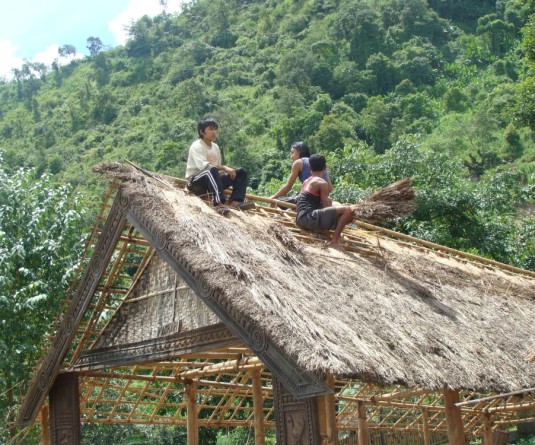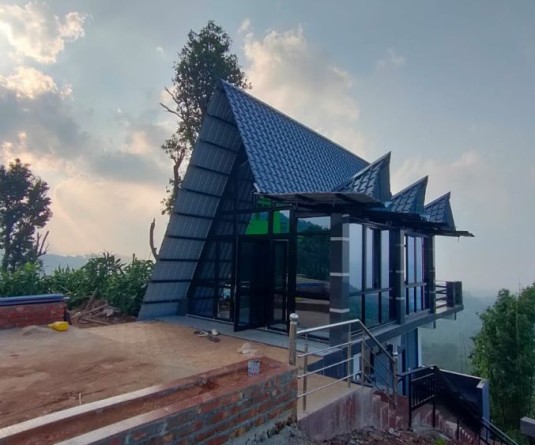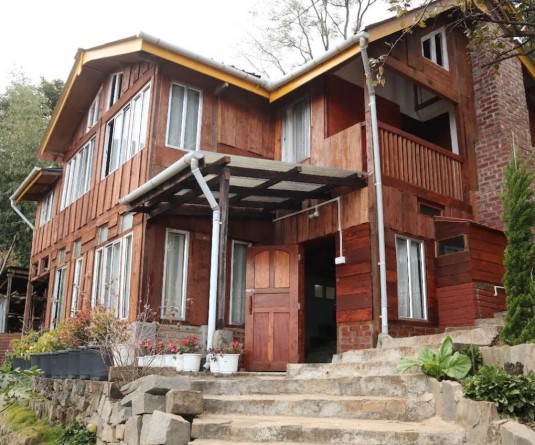Two men making bamboo strips outside a slate roofed house in a village in Kiphire district. With the introduction of CGI sheet and other modern roofing system, the use of slate for roofing is fast disappearing. (Morung Photo)
Traditional slate roofing of houses fast disappearing from Naga areas
Lipichem
Kiphire | January 3
The ‘Sanphur and Phelungru speaking’ people of Sangtam community have been using slate slabs in place of thatch or straw for construction of houses since time immemorial.
Although there are no written history on how the construction of houses using slate roofing originated in Naga areas, with the introduction of Corrugate Galvanized Iron (CGI) sheet and other modern roofing system, the use of slate for roofing is fast-fading.
This means the younger generations may not get to experience the privilege of living under such indigenous built slate roofing or learn its art. Slate roofed houses are considered not only eco friendly but it is also known to maintain constant temperature throughout all seasons.
At least in Pungren, a small hamlet some 40km away from Kiphire town, majority of the nearly 60-household still embrace the values and rich tradition they acquired from their ancestors. Even today, nearly 30% of the houses in the villages, along with the pigsty and granaries are slate roofed.
Recollecting the story passed on by their forefathers, elders of Pungren village shared to this Correspondent how slate house were typically constructed by the rich and the wealthy, because the expenditure and the process involved was very difficult and involving a couple of pricey dedications.
Once the construction of the house with slate roofing is completed, the owner has to slaughter a fat male pig to dedicate the slate house, the reason which poor people were disinclined to venture into constructing slate houses.
Since slate is found only in rocky cliffs and steep places where there is hardly any vegetation, villagers were even allowed to collect slates from community land for own use. But there is restriction for commercial purposes.
A person in the process of collecting slate also has to perform a ritual by killing a cock on the spot where slate is about to be collected. Only male members can perform the act and the womenfolk can but only help in carrying the harvested slate.
Further, if the ritual is not performed correctly, it was believed that the slate would break or proper shape and size would not be harvested, the elders recounted.
Harvesting slate is a tedious process, which requires the use of machete and sharp instruments to cut into preferred size and shape. Once the slate is harvested, it is carried to the village and with the help of a small iron, the slate is drilled on one side which is called a ‘nose’ through which one slate is tied on the other with a small rope and then follows the procedure of roofing.
According to the villagers, there is no record of slate being weathered or damaged. They guarantee that a slate house can survive at least a decade without major repair; with the only repair needed is to replace the ropes tied through the ‘nose.’
Slate roofed houses is also considered more safe from fire and storm. In summer, slate house is cooler and in winter, it emanates warmth. Slate houses are found only in some pockets of Kiphire district as most of the houses have been replaced by CGI sheet roofing.






